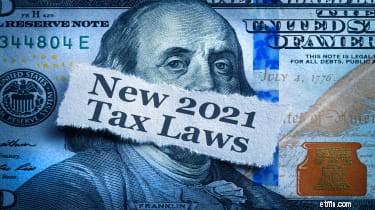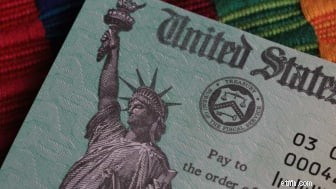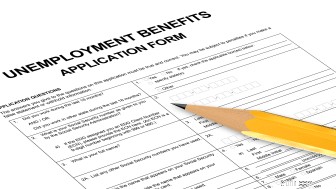
আপনি যদি ইতিমধ্যে শুরু না করে থাকেন, তাহলে আপনার 2021 ট্যাক্স রিটার্ন সম্পর্কে চিন্তা শুরু করার সময় এসেছে। সর্বোপরি, আপনি যত বেশি ট্যাক্স পরিকল্পনা করবেন, তত বেশি অর্থ আপনি সঞ্চয় করতে সক্ষম হবেন। যাইহোক, সঠিক কর পরিকল্পনার জন্য আগের বছর থেকে নতুন এবং পরিবর্তিত কী তা বোঝার প্রয়োজন — এবং 2021 কর বছরের জন্য প্রচুর ট্যাক্স আইন পরিবর্তন এবং আপডেট রয়েছে যে সম্পর্কে স্মার্ট করদাতাদের জানতে হবে।
গত ডিসেম্বর এবং মার্চে আইনে স্বাক্ষরিত কোভিড-ত্রাণ বিলগুলিতে আপনার 2021 ট্যাক্স রিটার্নকে প্রভাবিত করতে পারে এমন বেশ কয়েকটি বিধান অন্তর্ভুক্ত রয়েছে। অন্যান্য 2021 পরিবর্তনগুলি নতুন নিয়ম বা বার্ষিক মুদ্রাস্ফীতি সমন্বয়ের ফলাফল। তবে কীভাবে, কখন বা কেন পরিবর্তনগুলি করা হয়েছিল তা বিবেচনা না করেই, তারা আপনার নীচের লাইনকে আঘাত করতে বা সাহায্য করতে পারে — তাই আপনাকে তাদের জন্য প্রস্তুত থাকতে হবে। আপনাকে সাহায্য করার জন্য, আমরা 2021-এর জন্য সবচেয়ে গুরুত্বপূর্ণ ট্যাক্স আইন পরিবর্তন এবং সমন্বয়গুলির একটি তালিকা একসাথে টেনে এনেছি (কিছু সম্পর্কিত আইটেম একসাথে গ্রুপ করা হয়)। এই তথ্যটি এখনই ব্যবহার করুন যাতে আপনি এপ্রিল মাসে আপনার 2021 সালের রিটার্ন জমা দেওয়ার সময় আপনার কষ্টার্জিত নগদ ধরে রাখতে পারেন।

2021 চাইল্ড ট্যাক্স ক্রেডিট-এর জন্য বড় পরিবর্তন রয়েছে - কিন্তু, অন্তত আপাতত, সেগুলি শুধুমাত্র অস্থায়ী। 2020 ট্যাক্স রিটার্নের জন্য, 16 বছর বা তার কম বয়সী শিশু প্রতি ক্রেডিটটির মূল্য ছিল $2,000। যৌথ রিটার্নে আয় $400,000 এর উপরে এবং একক এবং পরিবারের প্রধান রিটার্নে $200,000 এর উপরে আয় বেড়ে যাওয়ায় এটি অদৃশ্য হতে শুরু করে। কিছু নিম্ন-আয়ের করদাতাদের জন্য, ক্রেডিটটি আংশিকভাবে "ফেরতযোগ্য" ছিল (যোগ্য শিশু প্রতি $1,400 পর্যন্ত) যদি তারা কমপক্ষে $2,500 আয় করে থাকে। (এর অর্থ হল আইআরএস আপনাকে ফেরতযোগ্য পরিমাণের জন্য একটি ফেরত চেক জারি করেছে যদি ক্রেডিটটি আপনার আয়কর দায় থেকে বেশি মূল্যের হয়।)
আমেরিকান রেসকিউ প্ল্যান, যা 2021 সালের মার্চ মাসে প্রণীত হয়েছিল, 2021 কর বছরের জন্য শিশু ট্যাক্স ক্রেডিটকে একটি নাটকীয়, এক বছরের সম্প্রসারণ প্রদান করে। সবচেয়ে বড় পরিবর্তনগুলির মধ্যে একটি হল ক্রেডিট পরিমাণ। 2021-এর জন্য, বেশিরভাগ বাচ্চাদের জন্য এটি $2,000 থেকে $3,000 - কিন্তু 5 বছর বা তার কম বয়সী বাচ্চাদের জন্য $3,600-এ পৌঁছেছে। অতিরিক্ত পরিমাণ ($1,000 বা $1,600) হ্রাস করা হয়েছে - যদিও উচ্চ আয়ের পরিবারগুলির জন্য - সম্ভাব্যভাবে শূন্য। একক ব্যক্তি হিসাবে তাদের ট্যাক্স রিটার্ন দাখিল করা লোকেদের জন্য, যদি তাদের সামঞ্জস্য করা মোট আয় $75,000 এর উপরে হয় তবে অতিরিক্ত পরিমাণ ফেজ-আউট হতে শুরু করে। ফেজ-আউট শুরু হয় $112,500 থেকে পরিবারের প্রধান ফাইলারদের জন্য এবং $150,000 বিবাহিত দম্পতিদের জন্য একটি যৌথ রিটার্ন দাখিল করার জন্য। প্রাক-বিদ্যমান $200,000/$400,000 ফেজ-আউট নিয়মের অধীনে ক্রেডিট পরিমাণ আরও হ্রাস করা হয়েছে৷
আরেকটি গুরুত্বপূর্ণ পরিবর্তন হল যে 2021 ক্রেডিট সম্পূর্ণরূপে ফেরতযোগ্য। 2021-এর জন্য প্রয়োজনীয় $2,500-অর্জিত আয়ও বাদ দেওয়া হয়েছে। 17 বছর বয়সী শিশুরাও 2021 ক্রেডিট পাওয়ার জন্য যোগ্য৷
৷শেষ পর্যন্ত নয়, 2021 ক্রেডিট অ্যামাউন্টের অর্ধেক মাসিক পেমেন্টের মাধ্যমে অগ্রিম দেওয়া হচ্ছে যা 15 জুলাই শুরু হয়েছিল এবং 15 ডিসেম্বর শেষ হবে। আপনি আপনার 2021 ট্যাক্স রিটার্নে ক্রেডিটের বাকি অর্ধেক দাবি করবেন। এছাড়াও, আপনি 2021 সালে IRS থেকে যে মাসিক পেমেন্ট পাবেন তা চাইল্ড ট্যাক্স ক্রেডিট এর সাথে মিলাতে হবে যা আপনি আপনার 2021 রিটার্ন ফাইল করার সময় দাবি করার জন্য আসলেই যোগ্য। যদি ক্রেডিট পরিমাণ মোট মাসিক পেমেন্টের চেয়ে বেশি হয়, আপনি আপনার রিটার্নে অতিরিক্ত ক্রেডিট দাবি করতে পারেন। কিন্তু যদি ক্রেডিট পরিমাণ অর্থপ্রদানের চেয়ে কম হয়, তাহলে আপনাকে অতিরিক্ত ফেরত দিতে হতে পারে বা নাও হতে পারে। এছাড়াও আপনি মাসিক চাইল্ড ট্যাক্স ক্রেডিট পেমেন্ট থেকে অপ্ট-আউট করতে পারেন যদি আপনি শুধুমাত্র আপনার ট্যাক্স রিটার্নে সম্পূর্ণ ক্রেডিট দাবি করেন (যেমন, একটি বড় রিফান্ড পেতে) অথবা আপনি 2021 ক্রেডিটের জন্য যোগ্য না হন (যেমন, যদি একজন প্রাক্তন পত্নী আপনার সন্তানের জন্য এই বছরের ক্রেডিট দাবি করবেন)। (আমাদের ব্যবহার করুন 2021 চাইল্ড ট্যাক্স ক্রেডিট ক্যালকুলেটর 2021-এর জন্য আপনার ক্রেডিট কত হবে তা দেখতে - আপনার মাসিক পেমেন্ট কত হবে তা সহ . )
যদিও এই বর্ধনগুলি শুধুমাত্র 2021 কর বছরের জন্য প্রযোজ্য, রাষ্ট্রপতি বিডেন তাদের বেশিরভাগকে 2025 এর মধ্যে প্রসারিত করতে এবং স্থায়ী ভিত্তিতে ক্রেডিট সম্পূর্ণরূপে ফেরতযোগ্য করতে চান। যাইহোক, সেই প্রচেষ্টা শেষ পর্যন্ত সফল হয় কি না সেটাই দেখার বাকি।
2021 ক্রেডিট সম্পর্কে আরও তথ্যের জন্য, চাইল্ড ট্যাক্স ক্রেডিট 2021 দেখুন:কে $3,600 পায়? আমি কি মাসিক পেমেন্ট পাব? এবং অন্যান্য FAQs।

আমেরিকান রেসকিউ প্ল্যান এছাড়াও শিশু এবং নির্ভরশীল যত্ন ক্রেডিট উল্লেখযোগ্য উন্নতি করেছে. কিন্তু, আবার, পরিবর্তনগুলি শুধুমাত্র 2021 কর বছরের জন্য প্রযোজ্য (যদিও রাষ্ট্রপতি বিডেন উন্নতিগুলিকে স্থায়ী করতে চান)।
তুলনামূলকভাবে, 2020 ক্রেডিট শিশু এবং নির্ভরশীল যত্ন খরচ কভার করে (1) যখন যত্ন প্রদান করা হয়েছিল তখন 13 বছরের কম বয়সী একটি নির্ভরশীল শিশু, অথবা (2) একজন যোগ্য প্রতিবন্ধী নির্ভরশীল বা আপনার সাথে বসবাসকারী যেকোনো বয়সের পত্নী। অ-ফেরতযোগ্য ক্রেডিট একটি শিশু/অক্ষম ব্যক্তির জন্য $3,000 পর্যন্ত যোগ্য খরচের 20% থেকে 35% বা দুই বা তার বেশির জন্য $6,000 মূল্যের ছিল। আয় $15,000 ছাড়িয়ে যাওয়ায় শতাংশ কমেছে৷
৷2021-এর জন্য, শিশু এবং নির্ভরশীল যত্ন ক্রেডিট সম্পূর্ণরূপে ফেরতযোগ্য। সর্বাধিক ক্রেডিট শতাংশও লাফিয়ে 35% থেকে 50% পর্যন্ত। ক্রেডিট জন্য আপনার যত্ন খরচ আরো উপলব্ধ আছে. 2021-এর জন্য, একজন শিশু/অক্ষম ব্যক্তির জন্য $8,000 পর্যন্ত খরচ এবং একাধিক ব্যক্তির জন্য $16,000 পর্যন্ত ক্রেডিট অনুমোদিত। যখন 50% সর্বোচ্চ ক্রেডিট শতাংশ প্রয়োগ করা হয়, তখন এটি 2021 কর বছরের জন্য সর্বোচ্চ ক্রেডিট $4,000 রাখে যদি আপনার পরিবারে শুধুমাত্র একজন শিশু/অক্ষম ব্যক্তি থাকে এবং যদি আপনার আরও থাকে $8,000।
এছাড়াও, পূর্ণ শিশু এবং নির্ভরশীল যত্নের ক্রেডিট এমন পরিবারগুলির জন্য অনুমোদিত হবে যা বছরে $125,000 এর কম উপার্জন করে (প্রতি বছর $15,000 এর পরিবর্তে)। এর পরে, ক্রেডিট ফেজ-আউট শুরু হয়. যাইহোক, $125,000 থেকে $438,000 এর মধ্যে উপার্জনকারী সমস্ত পরিবার অন্তত একটি আংশিক ক্রেডিট পাবে।
আরও তথ্যের জন্য 2021 সালের জন্য প্রসারিত চাইল্ড কেয়ার ক্রেডিট দেখুন।

যদিও করের হার পরিবর্তিত হয়নি, তবে 2021-এর আয়কর বন্ধনীগুলি 2020-এর তুলনায় কিছুটা বিস্তৃত। পার্থক্যটি সেপ্টেম্বর 2019 থেকে আগস্ট 2020 পর্যন্ত 12-মাসের সময়কালে মুদ্রাস্ফীতির কারণে, যা সমন্বয়গুলি নির্ধারণ করতে ব্যবহৃত হয়।
ট্যাক্সের হার
করযোগ্য আয় (একক)
করযোগ্য আয় (বিবাহিতদের যৌথভাবে ফাইল করা)
করযোগ্য আয় (পরিবারের প্রধান)
10%
$9,950
পর্যন্ত$19,900
পর্যন্ত$14,200
পর্যন্ত12%
$9,951 থেকে $40,525
$19,901 থেকে $81,050
$14,201 থেকে $54,200
22%
$40,526 থেকে $86,375
$81,051 থেকে $172,750
$54,201 থেকে $86,350
24%
$86,376 থেকে $164,925
$172,751 থেকে $329,850
$86,351 থেকে $164,900
32%
$164,926 থেকে $209,425
$329,851 থেকে $418,850
$164,901 থেকে $209,400
35%
$209,426 থেকে $523,600
$418,851 থেকে $628,300
$209,401 থেকে $523,600
37%
$523,600
এর বেশি$628,300
এর বেশি$523,600
এর বেশিউল্লেখ্য যে প্রেসিডেন্ট বিডেন 2022 সালের শুরুতে সর্বোচ্চ করের হার 39.6%-এ উন্নীত করতে চান। একক করদাতাদের জন্য $452,700 এর বেশি করযোগ্য আয়ের ক্ষেত্রে এই হার প্রযোজ্য হবে। 2022-এর পরে, মূল্যস্ফীতির জন্য থ্রেশহোল্ড যথারীতি সামঞ্জস্য করা হবে।

আমেরিকানরা জানতে পেরে রোমাঞ্চিত হয়েছিল যে আমেরিকান রেসকিউ প্ল্যান অ্যাক্ট তৃতীয় রাউন্ডের উদ্দীপনা চেকের অনুমোদন দিয়েছে। সেই চেকগুলি ছিল $1,400 এর জন্য, সাথে আপনার পরিবারের প্রতিটি নির্ভরশীলের জন্য অতিরিক্ত $1,400৷ যাইহোক, কিছু লোক এত বেশি (বা কিছু) পায়নি কারণ $150,000-এর উপরে সামঞ্জস্যপূর্ণ মোট আয় সহ যৌথ ফাইলারদের, $112,500-এর উপরে সামঞ্জস্যপূর্ণ মোট আয় (AGI) সহ পরিবারের প্রধান ফাইলার এবং একক ফাইলারদের জন্য অর্থপ্রদান পর্যায়ক্রমে বন্ধ করা হয়েছিল। $75,000 এর উপরে একটি AGI সহ। আসলে, আপনার AGI $160,000 (জয়েন্ট ফাইলার), $120,000 (পরিবারের প্রধান), বা $80,000 (একক) হলে তৃতীয় রাউন্ডের উদ্দীপনা চেক শূন্যে কমিয়ে দেওয়া হয়েছিল। (আমাদের ব্যবহার করুন৷ তৃতীয় উদ্দীপনা চেক ক্যালকুলেটর আপনার কত টাকা পাওয়া উচিত ছিল তা দেখতে .)
দুর্ভাগ্যবশত, কিছু লোক যারা তৃতীয় রাউন্ডের উদ্দীপনা চেকের জন্য যোগ্য ছিল তারা পেমেন্ট পায়নি বা তাদের যা পাওয়া উচিত ছিল তার চেয়ে কম পেয়েছে। এই লোকেদের জন্য, ত্রাণ একটি 2021 ট্যাক্স ক্রেডিট আকারে পাওয়া যেতে পারে যা পুনরুদ্ধার রিবেট ক্রেডিট নামে পরিচিত। প্রযুক্তিগতভাবে, আপনার তৃতীয় উদ্দীপক চেকটি ক্রেডিট এর অগ্রিম অর্থপ্রদান ছিল। সুতরাং, যখন আপনি আপনার 2021 রিটার্ন ফাইল করবেন, তখন আপনি যে পুনরুদ্ধার রিবেট ক্রেডিট দাবি করার অধিকারী, তার সাথে আপনার প্রাপ্ত তৃতীয় উদ্দীপক চেকটি (যদি থাকে) পুনর্মিলন করতে হবে। বেশিরভাগ লোকের জন্য, আপনার তৃতীয় উদ্দীপক চেক পেমেন্ট অনুমোদিত ট্যাক্স ক্রেডিট সমান হবে। সেক্ষেত্রে আপনার ক্রেডিট শূন্য হয়ে যাবে। যাইহোক, যদি আপনার তৃতীয় উদ্দীপক চেকটি আপনার ক্রেডিট পরিমাণের চেয়ে কম হয়, তাহলে আপনার পাওনা ট্যাক্স পার্থক্য দ্বারা হ্রাস পাবে (এবং আপনি একটি ফেরতও পেতে পারেন)। এবং যদি আপনার তৃতীয় রাউন্ডের উদ্দীপনা চেক আপনার ক্রেডিট পরিমাণের চেয়ে বেশি হয়, তাহলে আপনাকে আইআরএস-এ পার্থক্য পরিশোধ করতে হবে না। (এছাড়াও মনে রাখবেন যে উদ্দীপক চেক পেমেন্ট না করযোগ্য!)
ক্রেডিট সম্পর্কে আরও তথ্যের জন্য, রিকভারি রিবেট ক্রেডিট কী?
দেখুন
প্রয়োজনীয় ন্যূনতম ডিস্ট্রিবিউশন (RMDs) 2021 এর জন্য ফিরে এসেছে। জরিমানা ছাড়াই 2020 সালে সিনিয়রদের তাদের RMD এড়িয়ে যাওয়ার অনুমতি দেওয়া হয়েছিল। কিন্তু আরএমডি সাসপেনশন শুধুমাত্র এক বছরের জন্য প্রযোজ্য। সুতরাং, বছরের শেষ নাগাদ যার বয়স কমপক্ষে 72 বছর হবে তাকে 2021 সালের জন্য RMD নিতে হবে।
2021-এর জন্য অবসরকালীন পরিকল্পনা এবং IRA-এর অনেকগুলি মূল ডলারের সীমা একই রয়ে গেছে। উদাহরণস্বরূপ, 401(k), 403(b) এবং 457 প্ল্যানের জন্য সর্বাধিক অবদানের সীমা $19,500-এ থাকে, যেখানে 1972 সালের আগে জন্মগ্রহণকারীরা আবার $6,500 দিতে পারে একটি "ক্যাচ আপ" অবদান হিসাবে আরো. সিম্পল আইআরএ-তে অবদানের জন্য 2021-এর ক্যাপ একই থাকে $13,500, এছাড়াও 50 বছর বা তার বেশি বয়সীদের জন্য অতিরিক্ত $3,000।
প্রথাগত IRAs এবং Roth IRAs-এর জন্য 2021 অবদানের সীমা $6,000-এ স্থির থাকে, এবং 50 বছর বা তার বেশি বয়সের ব্যক্তিদের জন্য অতিরিক্ত ক্যাচ-আপ অবদান হিসাবে $1,000। যাইহোক, রথ আইআরএ অবদানের আয়ের সীমা বেড়েছে। দম্পতিদের জন্য $198,000 থেকে $208,000 এবং এককদের জন্য $125,000 থেকে $140,000 পর্যন্ত ($196,000 থেকে $206,000 এবং $124,000 থেকে $124,000 থেকে $3,000, যথাক্রমে) $198,000 থেকে $208,000 এর সামঞ্জস্যপূর্ণ মোট আয় (AGIs) এ অবদানগুলি 2021 সালে শেষ হবে৷
প্রথাগত IRA-এর জন্য কাটছাঁট ফেজআউটগুলিও 2021 সালে উচ্চতর স্তরে শুরু হয়, দম্পতিদের জন্য AGI $105,000 থেকে $125,000 এবং একক ফাইলারদের জন্য $66,000 থেকে $76,000 ($104,000 থেকে $124,000 এবং $65,070200-এর জন্য $65,02000 পর্যন্ত)। যদি শুধুমাত্র একজন স্বামী/স্ত্রী একটি পরিকল্পনার আওতায় থাকে, তাহলে অনাবৃত স্ত্রীর জন্য একটি অবদান কাটার জন্য ফেজআউট জোন AGI-এর $198,000 থেকে শুরু হয় এবং $208,000 এ শেষ হয় (2020-এর জন্য তারা ছিল $196,000 এবং $206,000)।

যোগ্য শিশু ছাড়া আরও কর্মীরা তাদের 2021 ট্যাক্স রিটার্নে অর্জিত আয়কর ক্রেডিট (EITC) দাবি করতে সক্ষম হবে, যার মধ্যে ছোট এবং বয়স্ক উভয় আমেরিকান রয়েছে। "সন্তানহীন EITC" পরিমাণও বেশি হবে। এছাড়াও, অন্যান্য পরিবর্তন রয়েছে যা নিম্ন আয়ের আমেরিকানদের জন্যও সাহায্য করবে।
2020 ট্যাক্স রিটার্নের জন্য, সর্বাধিক EITC ছিল $538 থেকে $6,660, আপনার আয় এবং আপনার কত সন্তান আছে তার উপর নির্ভর করে। যাইহোক, ক্রেডিট জন্য আয় সীমা আছে. উদাহরণস্বরূপ, যদি আপনার কোন সন্তান না থাকে, তাহলে আপনার 2020-এর আয় এবং AGI উভয়ই এককদের জন্য $15,820 এবং যৌথ ফাইলারদের জন্য $21,710 এর কম হতে হবে। আপনার যদি তিন বা ততোধিক সন্তান থাকে এবং আপনি বিবাহিত হন, তবে, আপনার 2020 উপার্জিত আয় এবং AGI $56,844 হতে পারে। আপনার যদি যোগ্য সন্তান না থাকে, তাহলে EITC দাবি করার জন্য আপনার বয়স 25 থেকে 64 বছরের মধ্যে হতে হবে কর বছরের শেষে৷
আমেরিকান রেসকিউ প্ল্যান কয়েকটি উপায়ে নিঃসন্তান কর্মীদের জন্য 2021 EITC প্রসারিত করেছে। প্রথমত, এটি সাধারণত ন্যূনতম বয়স 25 থেকে 19 কমিয়ে দেয় (নির্দিষ্ট পূর্ণ-সময়ের ছাত্রদের ছাড়া)। এটি সর্বোচ্চ বয়স সীমা (65) বাদ দেয়, তাই যোগ্য শিশু ছাড়া বয়স্ক ব্যক্তিরাও 2021 ক্রেডিট দাবি করতে পারেন। নিঃসন্তান কর্মীদের জন্য উপলব্ধ সর্বোচ্চ ক্রেডিট 2021 কর বছরের জন্য $543 থেকে $1,502 পর্যন্ত বৃদ্ধি করা হয়েছে। প্রাক্তন পালক যুবক এবং গৃহহীন যুবকদের জন্য প্রসারিত যোগ্যতার নিয়মগুলিও প্রযোজ্য৷
2020 EITC এর মতো, আপনি আপনার 2021 আয়ের পরিবর্তে আপনার 2019 উপার্জিত আয় ব্যবহার করতে পারেন যদি এটি আপনার ক্রেডিট পরিমাণ বাড়িয়ে দেয়।
উপরে বর্ণিত উন্নতিগুলি শুধুমাত্র 2021 কর বছরের জন্য। যাইহোক, কিছু স্থায়ী EITC পরিবর্তনও রয়েছে যা 2021 সালে কার্যকর হবে। উদাহরণ স্বরূপ, যে সকল কর্মীরা অন্যথায় ক্রেডিট দাবি করতে পারবেন না কারণ তাদের সন্তান শনাক্তকরণের প্রয়োজনীয়তাগুলি পূরণ করতে পারে না তারা এখন নিঃসন্তান EITC দাবি করতে পারে। কিছু বিবাহিত কিন্তু বিচ্ছিন্ন দম্পতিরাও এখন আলাদা ট্যাক্স রিটার্নে EITC দাবি করতে পারে। একজন শ্রমিকের বিনিয়োগের আয়ের সীমাও $3,650 (2020-এর জন্য) থেকে $10,000 (2021-এর পরে মুদ্রাস্ফীতির জন্য সামঞ্জস্য) বৃদ্ধি করা হয়েছে।
এছাড়াও নোট করুন যে রাষ্ট্রপতি বিডেন শিশুবিহীন কর্মীদের জন্য EITC প্যারামিটার বৃদ্ধি এবং বয়স-যোগ্যতার প্রসারণ স্থায়ী করতে চান। আবার, তারা এই মুহূর্তে শুধুমাত্র 2021 কর বছরের জন্য আবেদন করে।

দীর্ঘমেয়াদী মূলধন লাভের উপর করের হার (অর্থাৎ, কমপক্ষে এক বছরের জন্য রাখা মূলধনী সম্পদের বিক্রয় থেকে লাভ) এবং যোগ্য লভ্যাংশ 2021 এর জন্য পরিবর্তিত হয়নি। তবে, বিভিন্ন হারের জন্য যোগ্যতা অর্জনের জন্য আয়ের থ্রেশহোল্ডগুলি মুদ্রাস্ফীতির জন্য সামঞ্জস্য করা হয়েছিল।
2021 সালে, 0% হার একক রিটার্নে $40,400 পর্যন্ত করযোগ্য আয় (2020 এর জন্য $40,000), পরিবারের প্রধান ফাইলারদের জন্য $54,100 (2020-এর জন্য $53,600) এবং যৌথ রিটার্নের জন্য $80,800,020,020 ডলার পর্যন্ত করযোগ্য আয়ের জন্য প্রযোজ্য।
2021-এর জন্য 20% হার এককদের জন্য $445,851 থেকে শুরু হয় (2020-এর জন্য $441,451), পরিবারের প্রধানদের জন্য $473,751 (2020-এর জন্য $469,051) এবং যৌথভাবে ফাইল করা দম্পতিদের জন্য $501,601 ($496,601)।
0% এবং 20% বিরতি পয়েন্টের মধ্যে করযোগ্য আয়ের ফাইলারদের জন্য 15% হার।
নিট বিনিয়োগ আয়ের উপর 3.8% সারট্যাক্স 2021 সালের জন্য একই থাকবে। এটি $200,000 এর বেশি পরিবর্তিত AGI সহ একক ব্যক্তিদের জন্য এবং $250,000-এর বেশি পরিবর্তিত AGI সহ যৌথ ফাইলারদের জন্য শুরু হবে।
উল্লেখ্য যে, প্রেসিডেন্ট বিডেন চান যে কারো AGI $1 মিলিয়নের বেশি হলে তার দীর্ঘমেয়াদী মূলধন লাভের উপর সাধারণ আয়কর হারে কর দিতে হবে যাতে ব্যক্তির আয় $1 মিলিয়নের বেশি হয় (একজন বিবাহিত ব্যক্তির জন্য একটি পৃথক ট্যাক্স রিটার্ন দাখিল করার জন্য $500,000) .
দীর্ঘমেয়াদী মূলধন লাভ করের হার সম্পর্কে আরও জানতে, 2021 বনাম 2020-এর জন্য মূলধন লাভ করের হারগুলি কী কী?

মুদ্রাস্ফীতির জন্য 2021 সালের জন্য স্ট্যান্ডার্ড ডিডাকশনের পরিমাণ বাড়ানো হয়েছে। বিবাহিত দম্পতিরা $25,100 (2020 এর জন্য $24,800), এছাড়াও 65 বছর বা তার বেশি বয়সী প্রতিটি স্ত্রীর জন্য $1,350 (2020 এর জন্য $1,300) পান। অবিবাহিতরা $12,550 স্ট্যান্ডার্ড ডিডাকশন দাবি করতে পারে (2020 এর জন্য $12,400) — $14,250 যদি তাদের বয়স কমপক্ষে 65 বছর হয় (2020 এর জন্য $14,050)। পরিবারের প্রধান ফাইলাররা তাদের স্ট্যান্ডার্ড ডিডাকশনের জন্য $18,800 (2020-এর জন্য $18,650), এবং 65 বছর বয়সে পৌঁছানোর পরে অতিরিক্ত $1,700 পান। অন্ধ ব্যক্তিরা তাদের স্ট্যান্ডার্ড ডিডাকশনের জন্য অতিরিক্ত $1,350 নিতে পারেন ($1,700 যদি তারা অবিবাহিত হন এবং না হন। জীবিত পত্নী)।

The American Rescue Plan Act made up to $10,200 of unemployment compensation ($20,400 for married couples filing jointly) exempt from federal income tax for households with an adjusted gross income less than $150,000 (the IRS sent refunds to people who filed their return before the exemption was enacted).
Unfortunately, the exemption only applied to unemployment compensation received in 2020. So, for 2021, Uncle Sam will once again fully tax unemployment compensation as if it were wages.

For the 2020 tax year, a new "above-the-line" deduction was allowed for up to $300 of charitable cash contributions. Only people who claimed the standard deduction on their tax return (rather than claiming itemized deductions on Schedule A) could take this deduction.
The write-off was originally scheduled to expire after 2020, but it was later extended to 2021 – with one important enhancement. For 2020, one deduction was allowed per return, meaning married couples who filed jointly could only deduct $300, not $600. However, for 2021, one deduction is allowed per person, which means married couples can deduct up to $600 on a joint 2021 tax return.
The 2020 suspension of the 60%-of-AGI limit on deductions for cash donations by people who itemize was also extended through the 2021 tax year.

Normally, if a student loan is canceled, forgiven, or otherwise discharged for less than the amount you owe, the amount of canceled debt is considered taxable income. However, starting in 2021, this rule is suspended for most canceled student loan debt that was incurred for a post-secondary education. The change is only temporary, though. In 2026, forgiven student loan debt will once again be taxed.
The rule allowing workers to exclude up to $5,250 of college loans paid by their employer in 2020 from taxable wages was also extended through 2025. The $5,250 cap applies to both student loan repayment benefits and other educational assistance offered by an employer.

For 2021, the adoption credit can be taken on up to $14,440 of qualified expenses ($14,300 for 2020). The full credit is available for a special-needs adoption, even if it costs less. The credit begins to phase out for filers with modified AGIs over $214,520 and disappears at $254,520 ($214,520 and $254,520, respectively, for 2020).
The exclusion for company-paid adoption aid was also increased from $14,300 to $14,440 for 2021.

The lifetime estate and gift tax exemption for 2021 jumped from $11.58 million to $11.7 million — $23.4 million for couples if portability is elected by timely filing IRS Form 706 after the death of the first-to-die spouse. The estate tax rate remains steady at 40%.
The gift tax exclusion remains $15,000 per recipient. So, you can give up to $15,000 ($30,000 if your spouse agrees) to each child, grandchild or any other person in 2021 without having to file a gift tax return or tap your lifetime estate and gift tax exemption.

Unfortunately, the tuition and fees deduction was repealed beginning with the 2021 tax year. That "above-the-line" write-off was worth up to $4,000.
However, to balance out the loss of the tuition and fees deduction, the phase-out thresholds for the lifetime learning credit were permanently increased. For the 2020 tax year, the credit was gradually reduced to zero for joint filers with a modified AGI from $118,000 to $138,000 and single filers with a modified AGI between $59,000 and $69,000. Beginning in 2021, the phase-out range for married couples filing a joint return is $160,000 to $180,000, and it's $80,000 to $90,000 for single filers. (The same phase-out ranges apply to the American Opportunity tax credit.)
The income caps are also higher in 2021 for tax-free EE bonds used for education. The exclusion starts phasing out above $124,800 of modified AGI for couples and $83,200 for others ($123,550 and $82,350 for 2020). It ends at modified AGI of $154,800 and $98,200, respectively ($153,550 and $97,350 for 2020). The savings bonds must be redeemed to help pay for tuition and fees for college, graduate school or vocational school for the taxpayer, spouse or a dependent.

U.S. taxpayers working abroad have a larger income exclusion in 2021. It jumped from $107,600 for 2020 to $108,700 for 2021. (Taxpayers claim the foreign earned income exclusion on Form 2555.)
The standard ceiling on the foreign housing exclusion is also increased from $15,064 to $15,218 for 2021 (although overseas workers in many high-cost locations around the world qualify for a significantly higher exclusion).

The Social Security annual wage base is $142,800 for 2021 (that's a $5,100 hike from 2020). The Social Security tax rate on employers and employees stays at 6.2%. Both workers and employers continue to pay the 1.45% Medicare tax on all compensation in 2021, with no cap. Workers also pay the 0.9% Medicare surtax on 2021 wages and self-employment income over $200,000 for singles and $250,000 for couples. The surtax doesn't hit employers, though.
In August 2020, President Trump issued an executive memorandum allowing employers to suspend the collection and payment of Social Security payroll taxes from September 1 until the end of 2020 for workers making less than $4,000 for any bi-weekly pay period (i.e., $2,000 per week, or $104,000 per year). The president's action didn't eliminate the tax debt — it just delayed withholding and payment of the tax — and it was optional. If your employer suspended payroll taxes in 2020, it must collect the deferred taxes from your paycheck by December 31, 2021. So, during 2021, some workers will have more withheld from their paychecks for the 6.2% Social Security tax.
The nanny tax threshold went up to $2,300 for 2021, which was a $100 increase from 2020.

The 2021 standard mileage rate for business driving fell from 57.5¢ to 56¢ a mile. The mileage allowance for medical travel and military moves also declined from 17¢ to 16¢ a mile in 2021. However, the charitable driving rate stayed put at 14¢ a mile — it's fixed by law.

The limits on deducting long-term care insurance premiums are higher in 2021. Taxpayers who are age 71 or older can write off as much as $5,640 per person ($5,430 for 2020). Filers age 61 to 70 can deduct up to $4,520 ($4,350 for 2020). Anyone who is 51 to 60 can deduct up to $1,690 ($1,630 for 2020). For people age 41 to 50, the max is $850 ($810 for 2020). Finally, for whippersnappers age 40 and younger, it's $450 ($430 for 2020). For most, long-term care premiums are medical expenses deductible only by itemizers on Schedule A. However, self-employed people can deduct them on Schedule 1 of the 1040.

The annual cap on deductible contributions to health savings accounts (HSAs) rose in 2021 from $3,550 to $3,600 for self-only coverage and from $7,100 to $7,200 for family coverage. People born before 1967 can put in $1,000 more (same as for 2020).
Qualifying insurance policies must limit out-of-pocket costs in 2021 to $14,000 for family health plans ($13,800 in 2020) and $7,000 for people with individual coverage ($6,900 in 2019). Minimum policy deductibles remain at $2,800 for families and $1,400 for individuals.

Health and dependent care flexible spending accounts (FSAs) generally run on an annual use-it-or-lose-it basis. There are limits to the amount you can contribute each year, too. However, because of difficulties some families faced when trying to use and manage their FSAs during the pandemic, some temporary rules were put in place to add even more flexibility to FSAs. For example, instead of losing unused FSA funds at the end of the year, employers can modify their FSA plans to allow a worker's unused funds from 2020 to be used in 2021 and unused funds from 2021 to be used in 2022.
As an alternative, employers are permitted to extend the grace period for using FSA funds after the end of the year. Normally, FSA plans can offer a grace period of up to 2½ months (i.e., to March 15). However, a grace period of up to 12 months is allowed for using 2020 and 2021 FSA funds.
Unused amounts carried over from a prior year or available during an extended grace period won't be taken into account in determining the annual contribution limit for the following year. That means the funds that continue to be available are still excluded from the employee's taxable income if used for dependent care expenses.
Workers can also contribute more to a dependent care FSA in 2021. Instead of the normal $5,000-per-year limit on tax-free contributions, a family can sock away up to $10,500 in a dependent care FSA in 2021 without paying tax on the contributions.
Employers are also allowed to extend the maximum age of eligible dependents from 12 to 13 for dependent care FSAs for unused amounts from the 2020 plan year carried over into 2021.

The premium tax credit helps eligible Americans cover the premiums for health insurance purchased through an Obamacare exchange (e.g., HealthCare.gov). The American Rescue Plan enhanced the credit for 2021 and 2022 to lower premiums for people who buy coverage on their own. First, it increases the credit amount for eligible taxpayers by reducing the percentage of annual income that households are required to contribute toward the premium. It also allows the credit to be claimed by people with an income above 400% of the federal poverty line.
In addition, when insurance is purchased through an exchange, eligible people can choose to have an estimated credit amount paid in advance to their insurance company so that less money comes out of their own pocket to pay monthly premiums. Then, when they complete their tax return, the calculated credit is compared it to the advance payments. If the advance payments are greater than the actual allowable credit, the difference (subject to certain repayment caps) must be paid back either by subtracting the difference from a tax refund or adding it to the tax owed. The American Rescue Plan suspended the repayment of excess advanced payments of the premium tax credit…but only for the 2020 tax year. So, advance payments in 2021 that exceed the credit amount on your 2021 tax return will have to be repaid.

There's good news for anyone worried about getting hit with the alternative minimum tax:AMT exemptions ticked upward for 2021. They increased from $113,400 to $114,600 for couples and from $72,900 to $73,600 for single filers and heads of household. The phaseout zones for the exemptions start at higher income levels as well — $1,047,200 for couples and $523,600 for singles and household heads ($1,036,800 and $518,400, respectively, for 2020).
In addition, the 28% AMT tax rate kicked in a bit higher in 2021 — above $199,900 of alternative minimum taxable income. The rate applied to AMTI over $197,900 for 2020.

There's a group of tax breaks that are constantly scheduled to expire, but that keep getting extended by Congress for another year or two. These tax breaks are collectively referred to as "tax extenders."
Several of the "tax extender" deductions and credits were set to expire after 2020…but guess what happened. Yep, Congress kicked the can down the road once again and renewed many of them on a temporary basis. Most of the extended tax breaks are for businesses, but several of them impact individual taxpayers.
Tax breaks for individuals that were extended until the end of 2021 include the:
The exclusion for forgiven mortgage debt was also renewed through 2025 (although the maximum amount that can be excluded is reduced from $2 million to $750,000).
In addition, the 26% rate for the residential energy efficient property credit was extended through 2022 (the credit applies to the cost of solar electric property, solar water heaters, geothermal heat pumps, small wind turbines, fuel cell property, and qualified biomass fuel property). The rate was previously scheduled to drop to 22% in 2021, but now it won't be reduced until 2023. The credit is then set to expire after 2023.
Two tax breaks for individuals were made permanent, too. First, the 7.5%-of-AGI threshold for deducting medical expenses won't be raised. It was scheduled to jump to 10% after 2020. The exclusion for state or local tax benefits and reimbursement payments provided to volunteer firefighters and emergency medical responders is now a permanent tax break as well.

If you're self-employed, there are some additional 2021 tax law changes that could impact your bottom line. For example, a key dollar threshold on the 20% deduction for pass-through income was increased for 2021. Self-employed people and owners of LLCs, S corporations and other pass-through entities can deduct 20% of their qualified business income, subject to limitations for individuals with taxable incomes in excess of $329,800 for joint filers and $164,900 for others ($326,600 and $163,300, respectively, for 2020).
In addition, tax credits that were allowed in 2020 for self-employed people who couldn't work for a reason that would have entitled them to pandemic-related sick or family leave if they were an employee have been extended to cover leave through September 30, 2021. The number of days for which self-employed people can claim the credit for family leave was also increased from 50 to 60, and the 10-day limit on the maximum number of days for which a self-employed person can claim the sick leave credit was reset to begin again on January 1, 2021.
Other changes that self-employed Americans need to know about include: